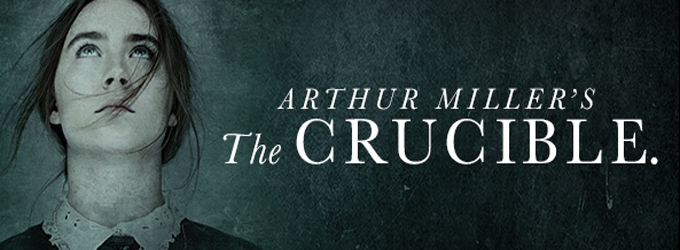Review: TCC's Uncut THE CRUCIBLE Is a Powerful Classic
Pressing against the raging storms of modern witch-hunts, between political conservatives and liberal voters, the theatre of envy pushes against our skins. Grasping this tension, Matthew Watson takes Arthur Miller's The Crucible from behind the cobwebs to present the tense drama in a stylized light. His choices focus on character performance, driving the brunt of the unabridged three and a quarter hour production into the actors capabilities. Although the weight bends some knees, the energetic sympathies of some characters gives Tallahassee Community College's Crucible the spark of magic it needs.
The Crucible is one of Arthur Miller's most beloved works, a commentary on the Red Scare of McCarthyism through the historical lens provided by the Salem witch trials. Taking real historical characters, Miller's work shows as John Proctor battles the grip of organized faith, vengeance, and the dark capabilities of humanity.
Each of The Crucible's four uncut scenes last close to an hour, without much motion or scenic change. Each scene works to highlight the strength of a different performer, and despite some inconsistencies from actors, the unabridged script gives opportunity to see some of TCC's most engaging and dramatic capabilities brought to the surface.
Filling the colonial boots of John Proctor is Anthony Coons, in his TCC debut. Coons is full of conflict, bracing the role with a furious rage that becomes the role's second scene strongest. Coons works well with his other performers, in regret for his wife, fury at his accusers, and powerless hope in the finale. Coons embeds a fear for legacy, the potential within a name, to give Proctor a cursed import.
and Patrick Montgomery
The show's moral center, not simply in philosophical dialogue but in his sincerely troubling pain, is Jake Armstrong's Reverand Hale. Each scene shows him in strong light, battling demons along with his own, as he must contend with the discrepancy between the Gospel and human life. The responsibility of much of the play's movement is Armstrong's, something he does silently from The Shadows as his cast mates explode in front of him. The silent majesty of Armstrong's performance is the show's biggest constant, a reliable piece of the production to fall upon in the more chaotic moments. Armstrong foils excellently with Coons, the evil of Evan Ross' Parris, and the plotting of Alexandria Chester's Abigail. The pain in his eyes transforms from fear of the darkness surrounding him into the darkness of the fear inside of him.
The supporting cast of characters is large, with their strengths and weaknesses. Performers such as the accusing trio (Chester's Abigail, Kristi Suzanne Wyatt's SusAnna Walcott, and Taylor Jones' Mercy Lewis) in the court sequence execute small, powerful turns that stand out in the lengthy show. Small blessings as the criminally unseen Kayla Badia as the Barbadian Tituba grace the stage in a few scenes, bringing their performance to the fray in key points. Playing the pivotal Mary Warren, Wendy Parkulo builds excellent tension through her struggles in the court trial, as does Chris Giles as the Deputy Governor Danforth, a role that dominates most of the show's second half.
The only detractors from the production lie not in length, but in the challenge of consistency. At times, the show feels like a later piece from Eugene O'Neil, where the continually stable energy level adds to the character analysis. Occasional accents clash, and in keeping characters true, the energy fluctuates. Yet on the positive side, audiences are given excellent performances from the characters that fit well into their stronger acts.
A large part of what succeeds in Watson's Crucible is his technical design, a modern, stylized visual experience that remains true to the original Salem. James Wright is the forefront of this charge, with a rotting wooden scenic design that brings the rushed forest from the show's opening into the homes and livelihood of the cast. With moving vertical pieces, that form asymetrical settings between acts, the dynamic potential of the play in extended stationary positions adds atmosphere. Working heavily on the atmosphere, assisting to give Wright a foundation, is returning lighting designer Todd Teagarden. Through use of multiple natural specials, and an increasingly warm color scheme, the show lights ablaze on Wright's reflective, woody stage. While the wigs and makeup are visually contrasting to the natural show, the costuming feels crisp without caricature. Crystal Nelson's designs match the Salem aesthetic while remaining varied between each character.
Any mounting of an unabridged Crucible will be filled with challenges and pitfalls, the mark of the production is how it overcomes them. Watson measures out his tools, sharpening the character performances of his best and surrounding the production with equally strong visual design. The production remains a testament to serious, engaging theatre that always is a pleasure to see coming from a collegiate team. Watson surely takes on The Crucible for what it's worth, with the wisdom of somebody who has tapped a bit too far into the magic.
The Crucible runs from November 17th until Dec. 3rd, at the Turner Auditorium. Tickets can be purchased online or at the door.
Photo Credit: Melina Myers
Reader Reviews
Videos


